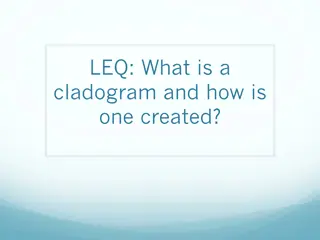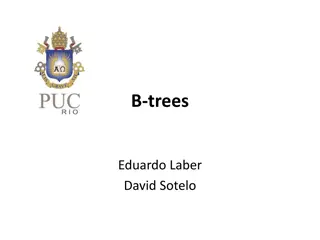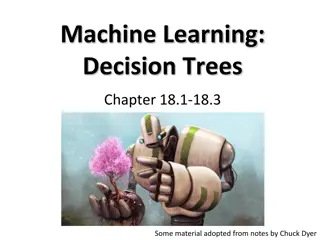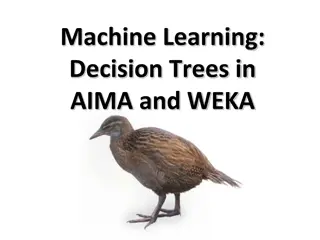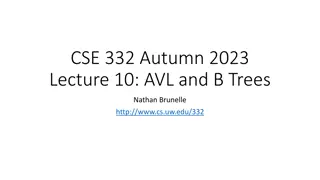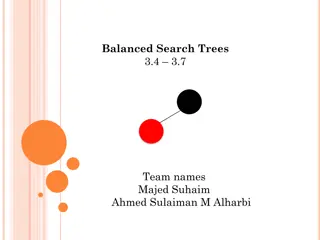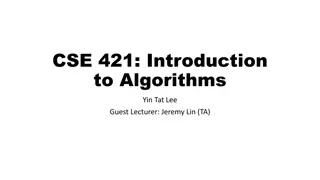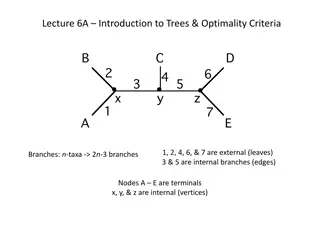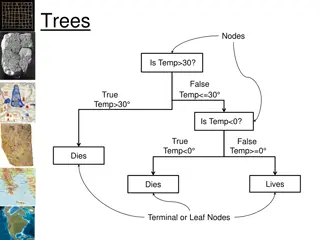Inferring Species Trees in the Presence of HGT: Simulation Study
"Explore the impacts of non-random HGT events on species tree estimation, comparing ASTRAL-III and CA-ML methods. Utilize Zombi phylogenetic simulator to study key parameters such as Transfer Rate and Assortative Transfer. Simulate scenarios with varying transfer rates and preferences to analyze their effects on tree inference."
Download Presentation

Please find below an Image/Link to download the presentation.
The content on the website is provided AS IS for your information and personal use only. It may not be sold, licensed, or shared on other websites without obtaining consent from the author.If you encounter any issues during the download, it is possible that the publisher has removed the file from their server.
You are allowed to download the files provided on this website for personal or commercial use, subject to the condition that they are used lawfully. All files are the property of their respective owners.
The content on the website is provided AS IS for your information and personal use only. It may not be sold, licensed, or shared on other websites without obtaining consent from the author.
E N D
Presentation Transcript
Inferring Species Trees in the Presence of HGT: A Simulation Study CS581 Project Leah Weber April 28, 2020 DC (During Coronavirus)
Recall The transfer of genetic material between two living species is referred to as horizontal gene transfer (HGT) Galtier (2007) showed that under moderate amounts of random HGT (donors and recipients selected at random from contemporaneous time points) that it is still possible to infer a species tree Galtier, N. (2007). A Model of Horizontal Gene Transfer and the Bacterial Phylogeny Problem. Systematic Biology, 56(4), 633 642. https://doi.org/10.1080/10635150701546231
My Project 1. What are the impacts of species tree estimation when HGT is non-random? a. What if species that are more closely related have a higher probability of an HGT event? 1. What is the impact of varying transfer rates/preference simultaneously? 1. How does ASTRAL-III compare to CA-ML in the presence of HGT?
Zombi: A phylogenetic simulator of trees, genomes and sequences that accounts for dead lineages https://github.com/AADavin/ZOMBI
Key Parameters of Interest Transfer Rate - transfer events per genome per unit of time Assortative Transfer -If True, the recipient lineage is chosen according to a probability proportional to , where d is the normalized phylogenetic distance. Alpha - How much preference there is for transfer between closely related lineages Replacement Transfer - whether or not the transfer the gene is replace an orthologous gene (always true for my project) https://github.com/AADavin/ZOMBI
Simulation Design 40 Species 500 Genes 500 Nucleotides per gene (no indels) JC69 25 Replications Condition Transfer Rates* Assortative Transfer Alpha 1 (random) Low (2% of genes) False na 2 (random) High (6% of genes) False na 3 (preferential) Low (2% of genes) True Low (20) 4 (preferential) High (6% of genes) True High (100) 5 (preferential) Low (2% of genes) True Low (20) 6 (preferential) High (6% of genes) True High (100) *Ge F, Wang LS, Kim J. The cobweb of life revealed by genome-scale estimates of horizontal gene transfer. PLoS biology. 2005 Oct;3(10).
Pipeline Species Tree Evaluation (FN Rate) Gene Sequence Alignment raxml-ng ASTRAL-III Concatenate Sequences Simulated Data CA-ML Pipeline ASTRAL-III Pipeline
Preliminary Results (Dry Run) 40 species 3 replications High =5% of genes Low = 2% of genes Alpha =100 50 Genes 100 Nucleotides JC69
Estimated Transfer Rates Current study design does not consider variation in transfer rates across genomes Previous work by Dav n (2018) resulted in estimated transfer rates for Cyanobacteria Use published transfer rates from the 40 bacterial species in Ge, Wang and Kim (2005) +Ge F, Wang LS, Kim J. The cobweb of life revealed by genome-scale estimates of horizontal gene transfer. PLoS biology. 2005 Oct;3(10). *Dav n AA, Tannier E, Williams TA, Boussau B, Daubin V, Sz ll si GJ. Gene transfers can date the tree of life. Nature ecology & evolution. 2018 May;2(5):904-9.




